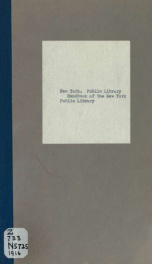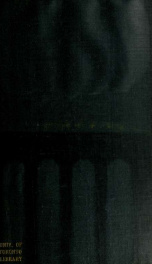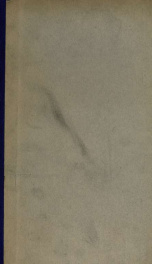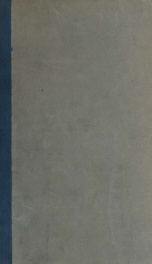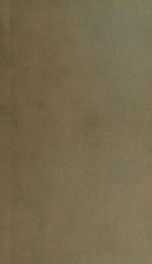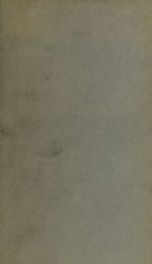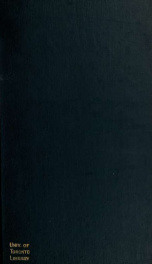New York Public Library
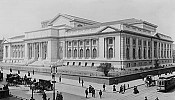
The New York Public Library (NYPL) is one of the leading public libraries of the world and is one of the United States's most significant research libraries. It is composed of a very large circulating public library system combined with a very large non-lending research library system. It is simultaneously one of the largest public library systems in the United States and one of the largest research library systems in the world. It is a privately managed, nonprofit corporation with a public mission, operating with both private and public financing. The historian David McCullough has described the New York Public Library as one of the five most important libraries in the United States, the others being the Library of Congress, the Boston Public Library, and the university libraries of Harvard and Yale.[2] The New York Public Library has branches in the boroughs of Manhattan, The Bronx and Staten Island. According to the American Library Association, the branch libraries comprise the twenty-sixth largest library in the United States.[3] New York City's other two boroughs, Brooklyn and Queens, are served by the Brooklyn Public Library and the Queens Borough Public Library respectively. These libraries predate the consolidation of New York City. Currently, the New York Public Library consists of 89 libraries: four non-lending research libraries, four main lending libraries, a library for the blind and physically challenged, and 77 neighborhood branch libraries in the three boroughs served. All libraries in the NYPL system may be used free of charge by all visitors. As of 2008, the research collections contain 44,160,825 items (books, videotapes, maps, etc.) of which 15,985,192 are books. The Branch Libraries contain 7,565,579 items of which 4,416,812 are books.[4] Together the collections total more than 50 million items, and the books number more than 20 million, a number surpassed only by the Library of Congress and the British Library. Due to the current 2009 economic crisis, NYPL is facing a $23.2 million funding cut when the new fiscal year begins July 1. This will result in the expected elimination of 465 jobs, and in sharply scaled back branch operating hours [5]. An early benefactor of the New York Public Library was New York governor and presidential candidate Samuel J. Tilden, who left the bulk of his fortune—about $2.4 million—to "establish and maintain a free library and reading room in the city of New York." At the time of Tilden's death in 1886, New York already had two important libraries: the Astor Library and the Lenox Library.[6] Another early founder-benefactor was wealthy New York merchant Robert Watts, the Son of New York Politician John Watts. The Astor Library was created by John Jacob Astor, an immigrant who became the wealthiest man in America. When he died in 1848, he left $400,000 in his will for the establishment of a library in New York City. The Astor Library opened the following year, 1849. Although it was not a circulating library, it was a major reference library for research.[6] The landmarked East Village building that now houses the Public Theater was built in 1854 as the Astor Library. The building was erected by William Backhouse Astor, Sr., son of the library's founder, John Jacob Astor. A German-born architect, Alexander Saeltzer, designed the building in Rundbogenstil style, then the prevailing style for public building in Germany. Astor funded expansions of the building designed by Griffith Thomas [1859] and Thomas Stent [1881]. both large expansions followed Saeltzer's original design so seamlessly that an observer cannot detect that the edifice was built in three stages. In 1920, the Hebrew Immigrant Aid Society purchased the building. By 1965 it was in disuse and faced demolition. The Public Theater (then the New York Shakespeare Festival) persuaded the city to purchase it for use as a theater. It was converted for theater use by Giorgio Cavaglieri.[7] New York's other main library was established by James Lenox and consisted mainly of his extensive collection of rare books (which included the first Gutenberg Bible to come to the New World), manuscripts, and Americana. The Lenox Library was intended primarily for bibliophiles and scholars. While it was free of charge, admission tickets (such as those that are still required to gain access to the British Library) were still needed by potential users.[6] So although there were already two fine libraries in New York City in 1886 and both were open to the public, neither could be termed a truly public institution in the sense that Tilden seems to have envisioned. But Tilden's vision was soon to come into fruition not only because of the generous bequest he left in his will but because of a man who was a trustee of his estate.[6] By 1892, both the Astor and Lenox libraries were experiencing financial difficulties. Almost as if fate would have it, John Bigelow, a New York attorney, and Tilden trustee, formulated a plan to combine the resources of the financially-strapped Astor and Lenox libraries with the Tilden bequest to form "The New York Public Library, Astor, Lenox and Tilden Foundations". Bigelow's plan, signed and agreed upon on May 23, 1895, was hailed as an example of private philanthropy for the public good.[6] The newly established library consolidated with The New York Free Circulating Library in February, 1901, and the philanthropist Andrew Carnegie donated $5.2 million to construct branch libraries, with the requirement that they be maintained by the City of New York. Later in 1901 the New York Public Library signed a contract with the City of New York to operate 39 branch libraries in the Bronx, Manhattan, and Staten Island.[6] Unlike most other great libraries, such as the Library of Congress, the New York Public Library was not created by government statute. From the earliest days of the New York Public Library, a tradition of partnership of city government with private philanthropy began, which continues to this day.[6] The organizers of the New York Public Library, wanting an imposing main branch, found a prominent, central site available at the two-block section of Fifth Avenue between 40th and 42nd streets, then occupied by the no-longer-needed Croton Reservoir. Dr. John Shaw Billings, the first director of the library, created an initial design which became the basis of the new building (now known as the Humanities and Social Sciences Library) on Fifth Avenue. Billings's plan called for a huge reading room on top of seven floors of bookstacks combined with a system that was designed to get books into the hands of library users as fast as possible. Following a competition among the city's most prominent architects, the relatively unknown firm of Carrère and Hastings was selected to design and construct the building. The result, a Beaux-Arts design, was the largest marble structure up to that time in the United States.[6] The cornerstone was laid in May 1902, but work progressed slowly on the project, which eventually cost $9 million. In 1910, 75 miles of shelves were installed, and it took a year to move and install the books that were in the Astor and Lenox libraries.[6] On May 23, 1911, the main branch of the New York Public Library was officially opened in a ceremony presided over by President William Howard Taft. The following day, the public was invited. Tens of thousands thronged to the Library's "jewel in the crown." The opening day collection consisted of more than 1,000,000 volumes. The New York Public Library instantly became one of the nation's largest libraries and a vital part of the intellectual life of America. Library records for that day show that one of the very first items called for was N. I. Grot's Nravstvennye idealy nashego vremeni ("Ethical Ideas of Our Time") a study of Friedrich Nietzsche and Leo Tolstoy. The reader filed his slip at 9:08 a.m. and received his book just six minutes later.[6] Two famous stone lions guarding the entrance were sculpted by Edward Clark Potter. They were originally named Leo Astor and Leo Lenox, in honor of the library's founders. These names were transformed into Lady Astor and Lord Lenox (although both lions are male). In the 1930s they were nicknamed "Patience" and "Fortitude" by Mayor Fiorello La Guardia. He chose these names because he felt that the citizens of New York would need to possess these qualities to see themselves through the Great Depression. Patience is on the south side (the left as one faces the main entrance) and Fortitude on the north.[6] The main reading room of the Research Library (Room 315) is a majestic 78 feet (23.8 m) wide by 297 feet (90.5 m) long, with 52 feet (15.8 m) high ceilings—lined with thousands of reference books on open shelves along the floor level and along the balcony; lit by massive windows and grand chandeliers; furnished with sturdy wood tables, comfortable chairs, and brass lamps. Today it is also equipped with computers with access to library collections and the Internet and docking facilities for laptops. Readers study books brought to them from the library's closed stacks. In late December 2008, the library had to close off access to these stacks and all of the books housed there (Note: Based on a phone call made to the NYPL questions line on August 8, 2009, it appears that the public has regained access to the Closed Stacks—this section should be reviewed.); the problem appears temporary, but the NYPL has not offered an explanation—beyond a vague mention of lead and facade work—or a date after which books can again be retrieved from the stacks for patrons. There are special rooms for notable authors and scholars, many of whom have done important research and writing at the Library. But the Library has always been about more than scholars, during the Great Depression, many ordinary people, out of work, used the Library to improve their lot in life (as they still do).[6] The building was declared a National Historic Landmark in 1965.[8] Over the decades, the library system added branch libraries, and the research collection expanded until, by the 1970s, it was clear the collection eventually would outgrow the existing structure. In the 1980s the central research library added more than 125,000 square feet (12,000 m²) of space and literally miles of bookshelf space to its already vast storage capacity to make room for future acquisitions. This expansion required a major construction project in which Bryant Park, directly west of the library, was closed to the public and excavated. The new library facilities were built below ground level and the park was restored above it.
do you like this author?
What readers are saying
What do you think? Write your own comment on this book!
write a commentWhat readers are saying
What do you think? Write your own comment on this author!
write a commentBook list

A List of works in the New York Public library relating to Scotland
Series:
Unknown
Year:
Unknown
Raiting:
4.5/5
26
Show more
add to favoritesadd In favorites

List of works in the New York Public Library relating to Persia
Series:
Unknown
Year:
Unknown
Raiting:
4/5
26
Show more
add to favoritesadd In favorites

Checklist of newspapers and official gazettes in the New York public library; comp. by Daniel C. Haskell
Series:
Unknown
Year:
Unknown
Raiting:
3/5
26
Show more
add to favoritesadd In favorites
Book list

A List of works in the New York Public library relating to Scotland
Series:
Unknown
Year:
Unknown
Raiting:
4.5/5
26
Show more
add to favoritesadd In favorites

List of works in the New York Public Library relating to Persia
Series:
Unknown
Year:
Unknown
Raiting:
4/5
26
Show more
add to favoritesadd In favorites

Checklist of newspapers and official gazettes in the New York public library; comp. by Daniel C. Haskell
Series:
Unknown
Year:
Unknown
Raiting:
3/5
26
Show more
add to favoritesadd In favorites
What readers are saying
What do you think? Write your own comment on this author!
write a commentif you like New York Public Library try:
readers also enjoyed
What readers are saying
What do you think? Write your own comment on this author!
write a commentGenre
if you like New York Public Library try:
readers also enjoyed
Do you want to read a book that interests you? It’s EASY!
Create an account and send a request for reading to other users on the Webpage of the book!
